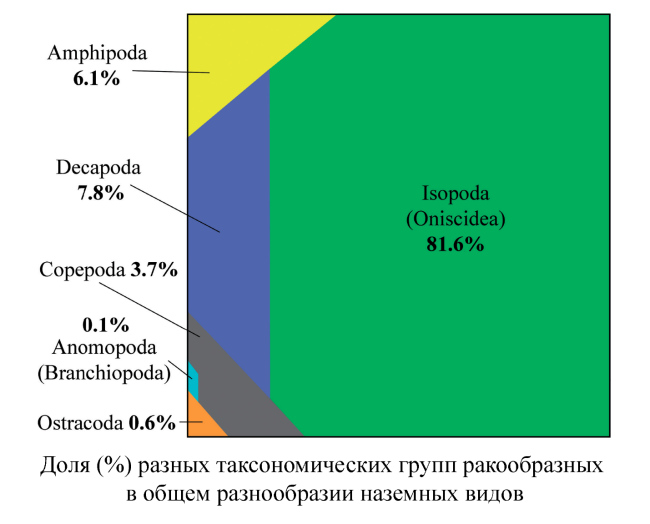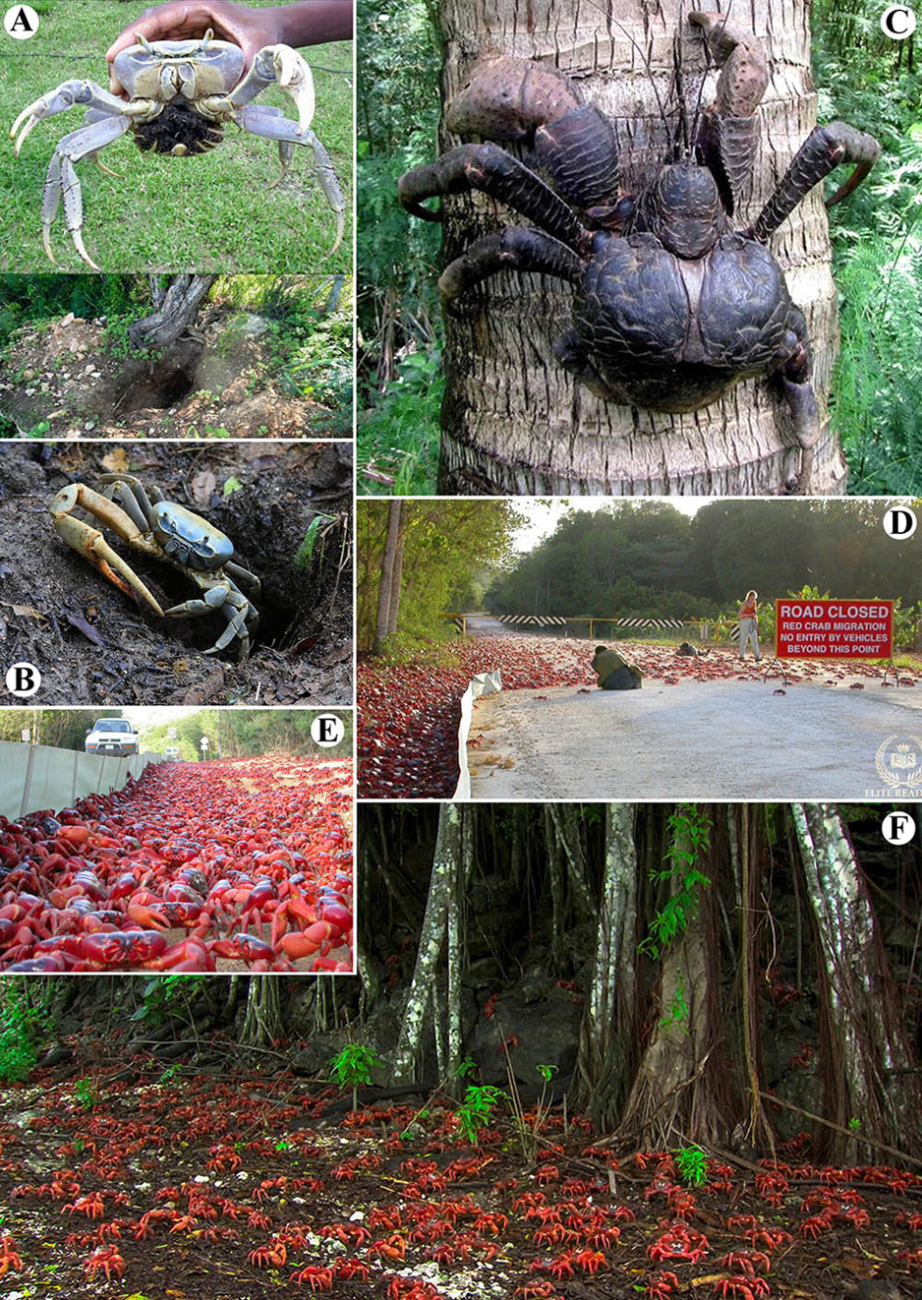In the published review, scientists from the Institute of Ecology and Evolution of the Russian Academy of Sciences assessed the diversity, distribution, and ecological functions of terrestrial crustaceans.
Of the approximately 70,000 known species of crustaceans, approximately 4,900 species live in terrestrial habitats. They can be divided into two ecological (but not phylogenetic) groups. Microcrustaceans (Cladocera, Ostracoda, Copepoda) are tiny organisms that live in water films or water-filled pores of soil, moss or plant litter. Macrocrustaceans (Amphipoda, Isopoda, Decapoda) are relatively large animals that spend the entirety or most of their life cycle independent of liquid water.

Terrestrial crustaceans are both the smallest (<1 mm in length) and most abundant, as well as the largest terrestrial arthropods. For example, the palm thief, the terrestrial hermit crab Birguslatro, reaches a weight of 3 kg, while many terrestrial crabs do not exceed 500 grams. Adaptations to a terrestrial lifestyle, including changes in morphology, physiology, and behavior, allow certain forms of terrestrial crustaceans to survive and thrive in virtually all geographic areas, including the Arctic and sub-Antarctic, mountain ecosystems above 4,500 m above sea level, and even extremely arid deserts . The most adapted species have acquired many of the characteristics of insects, including highly developed visual and olfactory systems. Unlike insects, crustaceans are capable of regenerating limbs and continuous growth throughout their lives.
Reaching high abundance and biomass, crustaceans are often an important component of terrestrial food chains, sometimes occupying the highest trophic positions. The density of soil copepods in humid terrestrial ecosystems can reach tens of thousands per square meter, comparable to the density of soil mites and springtails, and the total biomass of land crabs on some islands exceeds the biomass of mammals in tropical forests. Together with other macroarthropods and earthworms, saprotrophic macrocrustaceans play an important role in nutrient cycling, recycling and consuming up to 50% of all forest litter. It is noteworthy that crustaceans are the only group among terrestrial saprotrophic animals that are widely used as food by humans. Massive annual migrations of hecarcinid crabs from the forest to the coast, as well as the reverse migration of young crabs, form powerful flows of matter and energy connecting terrestrial and aquatic ecosystems.
Despite their great diversity, terrestrial crustaceans, with the exception of woodlice, are often ignored by terrestrial zoologists and ecologists. The information collected in the review will help draw attention to the functional role of crustaceans as one of the important components of soil ecosystems.

